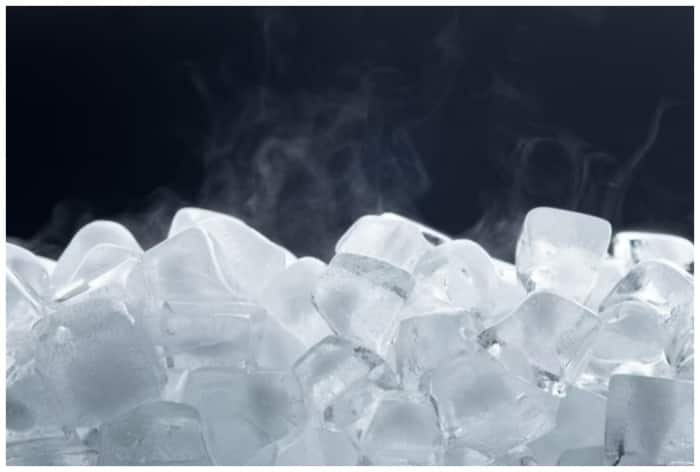In the recent unfortunate case of customers vomiting blood after being given dry ice as a mouth freshener, experts talked about the health side effects.
The recent Gurgaon cafe case has made dry ice one of the most common searches. Reportedly, five people at Laforestta Cafe, Sector 90 in Gurugram were hospitalized after they were accidentally given dry ice as a mouth freshener. Videos circulating on social media showed the affected individuals vomiting blood and reporting the burning sensation in their mouths.
Doctors on Tuesday said consumption of dry ice and liquid nitrogen is not safe for consumption after a terrifying incident was reported from Gurugram in which five guests were hospitalized. Dry ice is frozen carbon dioxide (CO2) with a surface temperature of -109.3 degrees Fahrenheit (-78.5 degrees Celsius). It is manufactured by compressing and cooling gaseous CO2 under high pressure to initially produce liquid CO2.
Dry ice also has the nice property of sublimation, because it breaks down; it turns directly into CO2 gas instead of a liquid. The super cold temperature and sublimation function make dry ice ideal for cooling.
Why is dry ice dangerous?
“Dry ice can cause serious damage to the skin and internal organs if misused or accidentally swallowed due to the extremely low temperatures it can maintain. Touching dry ice is a lot like touching something very hot. If you hold a cold piece of dry ice for more than a second, your skin cells will freeze and begin to die. Prolonged contact with dry ice causes frostbite, which can lead to burns and scarring,” Dr. Tushar Tayal, Principal Consultant, Department of Internal Medicine, CK Birla Hospital, Gurugram, told IANS.
Dry ice and liquid nitrogen are often used by restaurants and cafes in food and drinks for their smoke effect, which can make it look more attractive and chic.
Liquid nitrogen is simply nitrogen that has gone from its natural gaseous state to a liquid state. Liquid nitrogen has a boiling point of approximately −196 degrees Celsius. It is produced industrially by fractional distillation of liquid air. It is used in cryotherapy, cryogenics and also has culinary applications.
“Dry ice and liquid nitrogen are not intended for consumption and can cause serious harm if ingested,” Neelima Bisht, head of clinical nutrition, Dietetics Department, Paras Health Gurugram, told IANS.
Similar to dry ice: “Liquid nitrogen, while often used in luxury foods for its dramatic effect, can pose significant health risks if not handled properly. Swallowing liquid nitrogen can cause serious internal damage, including frostbite and tissue damage. Both dry ice and liquid nitrogen can cause vomiting, bleeding and other serious health complications,” Bisht said.
The Food Safety and Standards Authority of India (FSSAI), the US Food and Drug Administration (FDA) and the Centers for Disease Control and Prevention (CDC) call both dry ice and liquid nitrogen a deadly substance and unfit for consumption.
The FSSAI also urges the Food Safety Commissioners of all States/UTs to “initiate a systematic campaign to create awareness among all food business operators and citizens on the safe and proper handling of dry ice as a refrigerant for food products.”
(With IANS inputs)


